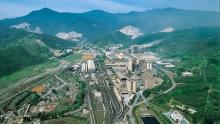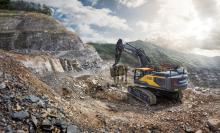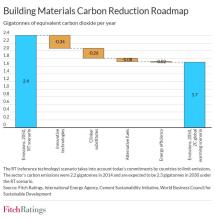
With the urgency of climate change accelerating and cement production emitting 7% of the world’s CO₂, the cement industry is under scrutiny for its response to the issue.
At a series of industry webinars in late 2020, cement solutions provider FLSmidth asked participants about their status on alternative fuel. The webinars saw a global and a regional Asian/Pacific (APAC) audience.
Asked ‘What is your current rate of fuel substitution?’, one quarter of the global cement professionals responded ‘Less the 20%’. On the same question, more than three quarters of their APAC colleagues responded the same.
However, looking ahead five years on what is the ‘desired’ substitution rate, there was a dramatic increase among the APAC producers, with 50% stating they would like to be in the 20-40% bracket, 26% would like to be in the 40-60% bracket, while 13% would like to be in the ‘greater than 80%’ bracket.
In a recent analysis of the global alternative fuels adoption in cement, FLSmidth pyro experts Mads Nielsen and Robert Krist concluded that countries such as South Korea and Japan have taken the lead in the region, with adoption rates similar to Europe. This is causing a second-wave of alternative fuel adoption as places move towards 100% substitution rates.
In November 2020, Korean Sungshin Cement announced the purchase of two new HOTDISC Combustion Devices from FLSmidth to replace coal with alternative fuel in their kiln lines 3 and 6. The first device is expected to be commissioned in mid-2021 and the second at the end of 2021. After a recent installation at SsangYong’s Yeongwol and Donghae plants this will be HOTDISC number 3 and 4 on the Korean peninsula.
Although there is no lack of available alternative fuels, FLSmidth says that China for instance, has traditionally had a relatively low substitution rate. However, driven by acute concerns over air quality and waste disposal in many Chinese cities, the Chinese government now pays much more attention to sustainability issues and the transition has picked up pace. Cement companies that burn municipal waste as an alternative fuel are not subject to the same stringent production limits (brought in by the government to tackle overcapacity in the industry) as plants that use only fossil fuels.
In India, new regulations to deal with the growing waste problem now compel cement companies to use refuse-derived fuels for at least 5% of their fuel requirements. In a measure that FLSmidth says appears to be all stick and no carrot, cement companies are responsible for bearing the cost of these regulations. There are, for example, no gate fees payable to cement companies to offset investment in alternative fuel handling equipment
This regulatory-driven approach has resulted in a focus on low-cost systems for alternative fuels handling systems, mostly from local Indian suppliers.
Indian cement producer Dalmia has previously announced its commitment to achieving 100% substitution rates by 2030. To realise the ambition, the equipment and design of Dalmia Cement’s new line at Rajgangpur was specifically curated to maximise the potential for alternative fuels.
In a recent article on the outlooks for 2021, FLSmidth India MD Ramanathan Chandran stated: “We see new regulations on waste-to-energy and handling of waste, offering a massive opportunity for the cement industry.”








